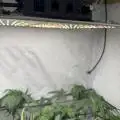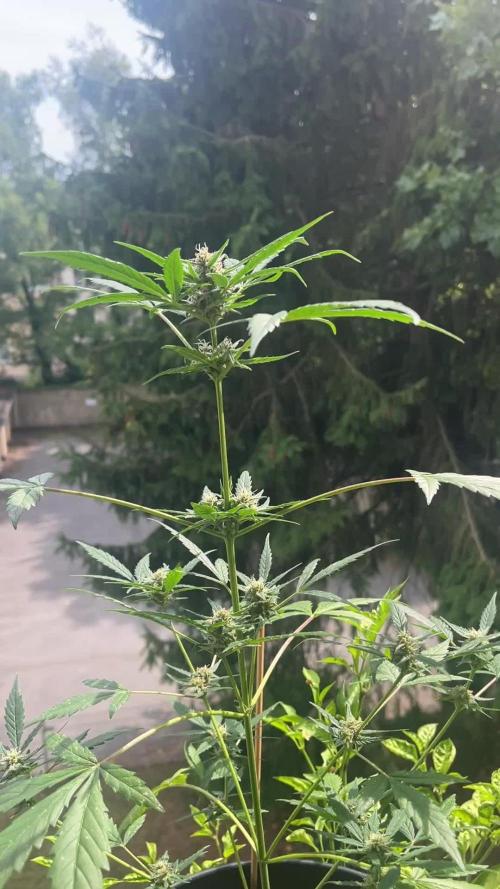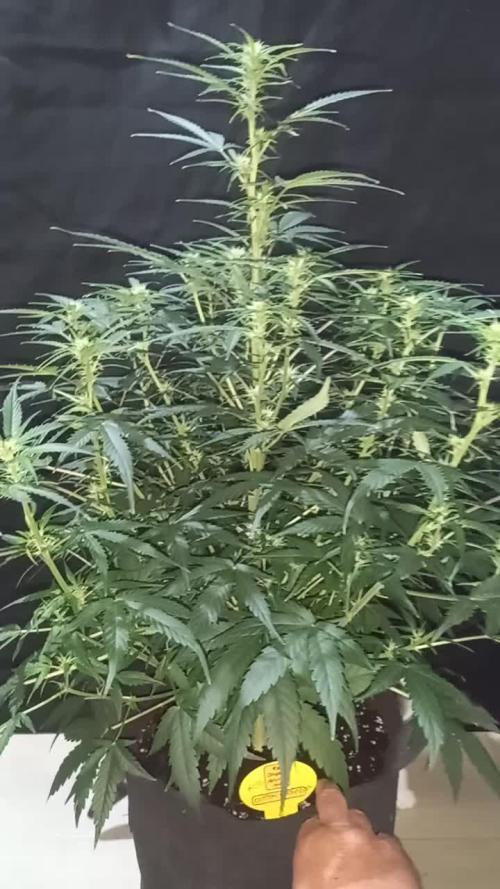The Grow Awards 2026 🏆 





























Likes
Comments
Share


@itsmemjh
Follow
Just brought my girls home. A good friend started the grow in his tent, (I’m in Michigan and getting ready to plant in ground outside.
Likes
11
Share


@Hawkbo
Follow
Sorry for the delay was in a wedding this weekend came home and been trimmin like a dog the past few days and didnt have time to do the update but I'll do another one before tuesday to get back on track. As of Friday sept 6 its day 46. In the video the plants from back left to right are ..
Gelato-> Cream Cookies -> Gelato
Middle row from left to right are Lemon A.K 1 -> 6 Shooter-> Lemon A.K
Front is Tester 5 -> Lemon A.K -> Tester 26
Likes
5
Share


@Budhunter
Follow
Week 10 is been magical.. Sour D is showing really good smell, different one.. similar with one I smoked from the streets.. plant is a bit smaller than gelato just beside it but man, they both are reaching the stars.. my biggest plants ever.. so far Barneys farm is showing really good genetics in my hands.. let’s gooo
I will cut off silicon and big bud from next week on 👍🏼👍🏼👍🏼
Likes
4
Share


@XanHalen
Follow
Nov 5th
3 plants doing exquisite, aphid population on those kept to a minimal and budwash will take care of the rest before drying.
One girl, for whatever reason, was absolutely infested, so i carefully put a bag around it and threw it away... for the greater good.
defol on all plants to get rid of dying leaves or leaves saturated with gangs of phids'.
Likes
25
Share


@OZDAOgrow
Follow
During this week, I have only occasionally defoliated to get better light on the inflorescences.
I don't know when to put it into flower yet, as the smallest bush (Fruit Diesel) is looking quite pitiful, having just turned a month old. Other bushes are a couple weeks ahead of Fruit Diesel.
What do you think, should I give it another week of vegetation or should I switch it to flowering at the end of the week?
Likes
60
Share


@Secretflower
Follow
Hello my friends,
...May 30, 2022....Day N°79..
...Flowering day N°23...
My two Feminized Royal THCV are fine and beautiful, they are monster plants, the stretching seems stabilized and the flowers smells awesome.
#1...130cm
#2.. 130cm
I give them water with a tablet of Easy Bloom and a tablet of Easy Micronutrients from RQS Organics Nutrients.
They are under a MarsHydro TSW 2000 at 60% of power and at 20cm of the canopy.
www.royalqueenseeds.com
www.mars-hydro.com
Thank you very much for passing by.
Wish you the best with your green projects, peace.
See you soon 💨💨💨
Processing
Likes
22
Share


@eldruida_lamota
Follow
Adelantamos unas horas la actualización de esta semana, y es que ya terminamos segunda semana de floración, cada vez va quedando menos 🙈, estas critical a granel de grow barato como siempre salieron preciosas , tienen buen porte muy bien ramificadas y ahora que produzca esa flor que tanto nos gusta.
.
La humedad esta al 45% la temperatura está entre 21/24 grados , y como siempre el ph , ya que es de lo más importante,está en 5,8/6,0.
.
AgroBeta:
0,5 ml x L Flowering black line , vía radicular.
0,2 ml x L Beta shark, vía radicular.
0,3 ml x L Tucán , vía radicular.
0,8 ml x L Génesis, vía radicular.
0,1 ml x L Betazyme, vía radicular.
0,2 ml x L Flash Root , vía radicular.
0,05 ml x L Gold Joker, vía radicular.
0,2 ml x L Silver, vía radicular.
.
Hasta aquí todo familia 🕸️ , un saludo y buenos humos fumetillas💨💨💨.
Likes
43
Share


@Johnny2Fire4U
Follow
Feeding just ph'd water bout to transplant to 5gallon n then flip to flower after a few days.
Likes
96
Share


@The_Projexx
Follow
This past week the ladies have recovered well , it will be my last week of veg and then I will be flipping the lights . So far so good on the topping of obi#1 shes recovering well just giving her abit more time before we go ahead and change the lights . I'd like to thank every one for stopping by the diary and showing me their love and support ! Remember to check my diaries daily for updates !
Started flowering on Saturday marked off as Day#1F
-Happy Growing!
Likes
7
Share


@jojopfoh
Follow
This girl is nearing the end. Currenty it is 56+ days in flower and it is a 62-67 flower strain. There are just so many beautiful buds. It is so stickiy and frosty with a sweet smell.
Likes
1
Share


@YoyoDE
Follow
Trotz des schlechten Wetters sind die kleinen Buds etwas größer geworden. Die Pflanzen im Ganzen sind aber nicht gewachsen. Sie bekommen gerade etwas Neemlösung, da die einige der großen Blätter stark angepiekst sind. Die nächste Zeit wird das Wetter ja wieder prima, das gibt hoffentlich nen guten Schub
Likes
2
Share


@GERGrowDesigns
Follow
Welcome to Flower Week 2-3 of Divine Seeds Auto 77 Days
I'm excited to share my grow journey with you all as part of the Divine Seeds Autoflowering Competition 2025. It's going to be an incredible ride, full of learning, growing, and connecting with fellow growers from all around the world!
For this competition, I’ve chosen the Feminized Automatic strain: Auto 77 Days
Here’s what I’m working with:
• 🌱 Tent: 120x60x80
• 🧑🌾 Breeder Company: Divine Seeds
• 💧 Humidity Range: 60
• ⏳ Flowering Time: 56 Days
• Strain Info: 21%THC
• 🌡️ Temperature: 26
• 🍵 Pot Size: 0.5l
• Nutrient Brand: Narcos
• ⚡ Lights : 200W x 2
A huge thank you to Divine Seeds for allowing me to be a part of this amazing competition and Sponsoring the Strains. Big thanks for supporting the grower community worldwide! Your genetics and passion speak for themselves!
I would truly appreciate every bit of feedback, help, questions, or discussions – and of course, your likes and interactions mean the world to me as I try to stand out in this exciting competition!
Let’s grow together – and don’t forget to stop by again to see the latest updates!
Happy growing!
Stay lifted and stay curious!
Peace & Buds!
Likes
11
Share


@SkunkyDog420
Follow
Hallo zusammen 🤙.
Sie wächst sehr schön und macht keine Probleme.
Rabattcode für den BIOTABS-Webshop https://biotabs.nl/en/shop/ GDBT420, damit erhalten Sie 15 Prozent
Likes
15
Share


@Stick
Follow
I made a full timelapse of the run, make sure to watch it in my harvest post!
This run was a full success, thanks to good genetics + good lights + good nutrients, I'm very happy with the outcome.
Thanks to everyone for reading this diary, and stay tuned for other grow reports! 😎👊
Likes
14
Share


@BruWeed
Follow
🍀Estuvo bien en toda su etapa, no tuve ningún problema. Los resultados fueron muy buenos, se encuentra muy resinosa y con aroma a dulce.
🍀En total saque 143g de una sola planta.
🍀En total estuvo 105 días de vida desde su germinación.
🍀Recomiendo esta genética, por el momento son cocos Premium, ya quiero probarlo para saber que sabor tiene.
🍀Ahora se encuentra en etapa de secado, cuando ya estén para la etapa de curado subiré más imágenes.
🍀🇦🇷Podes seguirme en Instagram como @bruweed_arg🍀🇦🇷


























